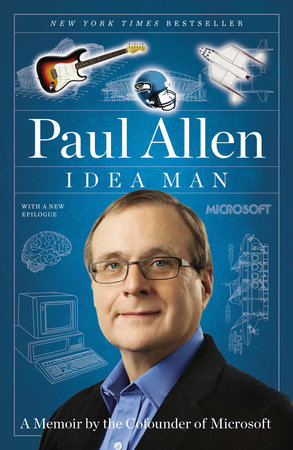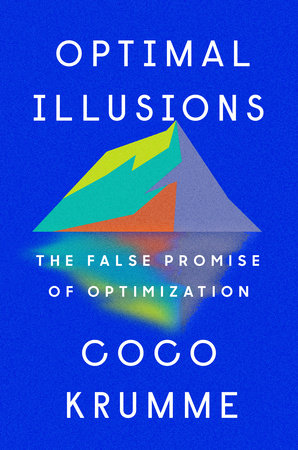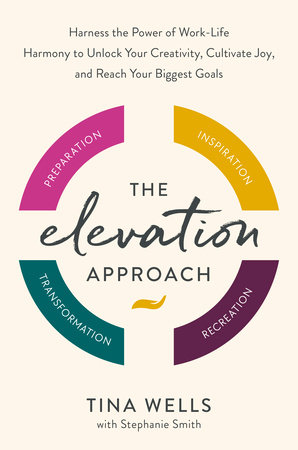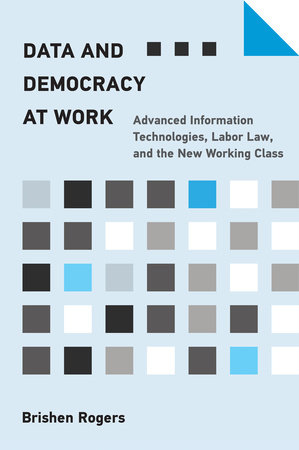Quick Summary
One Sentence Summary
“Idea Man” by Paul Allen provides an insider’s look into the co-founding of Microsoft and the personal and professional journey of one of the tech industry’s most influential figures.
Big Idea
The book delves into how innovation, partnership, and vision can lead to world-changing ideas, showcasing Paul Allen’s role in shaping the technology landscape.
Five Key Ideas
- The Birth of Microsoft: Allen’s early partnership with Bill Gates and the formation of Microsoft.
- Innovation and Challenges: The technological breakthroughs and obstacles encountered in the early days of personal computing.
- The Role of Visionary Leadership: Allen’s insights on leadership, decision-making, and predicting tech trends.
- Personal Struggles and Triumphs: Allen’s battle with cancer and his ventures beyond Microsoft.
- Philanthropy and Future Ventures: His involvement in diverse projects, philanthropy, and thoughts on future technologies.
Actionable Advice
Draw inspiration from Allen’s relentless curiosity and willingness to take risks. Embrace partnerships, but stay true to your vision and values.
About the Author
Paul Allen was a business magnate, investor, and philanthropist, best known as the co-founder of Microsoft alongside Bill Gates.
Read Next
To further explore tech innovation and personal success stories, consider reading:
- “Steve Jobs” by Walter Isaacson – A comprehensive biography of Apple’s co-founder.
- “The Innovators” by Walter Isaacson – Insights into the digital revolution and the people who made it happen.
- “Elon Musk” by Ashlee Vance – A look into the life and achievements of the entrepreneur behind SpaceX, Tesla, and more.
In Depth
The Birth of Microsoft
Paul Allen’s journey began long before Microsoft. Childhood friends with Bill Gates, their shared passion for computers set the stage. In 1975, a pivotal moment came. They saw an opportunity in the Altair 8800, a microcomputer by MITS.
Allen had a vision: software for the Altair. He convinced Gates to join him. They worked relentlessly. Their creation, a version of the BASIC programming language for the Altair, was a success. This laid the foundation for Microsoft.
In the early days, Allen was instrumental. He dealt with MITS and navigated the tech world’s complexities. Gates focused on the code. Their partnership, though sometimes rocky, was a fusion of Allen’s foresight and Gates’ technical prowess.
Microsoft’s first office was modest, in Albuquerque. The team was small, the ambiance informal. Despite this, their drive was palpable. The mission was clear: software for the world.
Allen’s role extended beyond just co-founder. He was a visionary, predicting the future of personal computing. He saw the potential of software, imagining a world where computers were in every home and office. This vision drove Microsoft’s early strategies.
One detailed example from the book highlights this. Allen recounts the development of MS-DOS, the operating system for IBM’s first personal computer. The deal with IBM was a turning point. But it wasn’t just about landing a big client. Allen saw it as a step towards ubiquity for personal computers. In the book, he describes the frenzied yet exhilarating process of developing MS-DOS. The small team worked around the clock, fueled by the potential impact of their work.
A quote from the book encapsulates Allen’s approach:
“I was less interested in the day-to-day and more in our overarching strategy and where technology was going. I was always looking over the next horizon.”
This quote reflects Allen’s role in Microsoft’s birth. He wasn’t just building a company; he was shaping the future.
Microsoft’s rise wasn’t without challenges. Financial pressures, technical setbacks, and personal differences tested them. Yet, Allen’s vision remained unwavering. His ability to look beyond immediate challenges set the tone for Microsoft’s growth.
In summary, the birth of Microsoft wasn’t just about starting a business. It was about a shared vision, a belief in the power of software, and a partnership that changed the world. Paul Allen’s foresight and ability to dream big were central to this. This early chapter set the stage for Microsoft to become a tech giant and paved the way for the digital revolution.
Innovation and Challenges
Microsoft’s journey was marked by continuous innovation and overcoming challenges. As the company grew, the team faced the daunting task of staying ahead in the fast-evolving tech world.
Paul Allen played a crucial role in this. His ability to foresee tech trends was invaluable. He didn’t just react to changes; he anticipated them. This forward-thinking approach led to the development of innovative products that kept Microsoft at the industry’s forefront.
One example is the creation of Windows. Allen and Gates recognized the need for a more user-friendly operating system. At that time, most computers used text-based commands. They envisioned an interface with graphical elements, making it more accessible. This led to the development of Windows. Allen’s role was pivotal. He pushed for innovation, understanding its potential to revolutionize personal computing.
The book gives an insider’s view of the challenges they faced. Technical issues, tight deadlines, and high expectations made the Windows project an intense experience. The team often worked long hours, driven by the shared goal of creating something groundbreaking.
A quote from the book illustrates Allen’s mindset during this period:
“The thrill of innovation trumps the fear of the unknown. It’s about seeing around corners and imagining what’s on the other side.”
This quote encapsulates the spirit of innovation that Allen brought to Microsoft. Despite the challenges, the thrill of creating something new and impactful was a driving force.
However, it wasn’t all smooth sailing. Microsoft faced external challenges too. The rapidly changing tech landscape, competition, and legal battles tested the company’s resilience. Internally, tensions sometimes arose between Allen and Gates, particularly over strategic decisions and company direction.
Allen candidly discusses these challenges in the book. He doesn’t shy away from admitting the difficulties they faced or the disagreements that occurred. This honesty provides a comprehensive view of what building a tech empire entails. It wasn’t just about the successes but also navigating the obstacles along the way.
These challenges, however, didn’t deter them. They were part of the journey. Each hurdle overcome was a step towards greater innovation. Allen’s foresight and commitment to innovation were instrumental in guiding Microsoft through these challenges.
In conclusion, innovation and overcoming challenges were intertwined in Microsoft’s journey. Paul Allen’s role in this can’t be overstated. His vision and determination to innovate, even in the face of obstacles, were key to Microsoft’s enduring success.
The Role of Visionary Leadership
Visionary leadership is a theme that resonates throughout “Idea Man.” Paul Allen’s leadership style was marked by foresight, creativity, and an unwavering belief in the power of technology to change the world.
Allen’s role at Microsoft wasn’t just about managing a business; it was about leading a technological revolution. He had an uncanny ability to predict future trends and understand how they could be harnessed. This vision set the direction for Microsoft’s early successes.
A detailed example from the book is Allen’s foresight regarding the internet’s potential. Long before the World Wide Web became mainstream, Allen recognized its significance. He pushed for the development of early internet technologies, understanding that the internet would fundamentally change how people interacted with technology.
The book recounts the challenges of convincing others about the internet’s potential. Many were skeptical, viewing it as a niche interest. But Allen was undeterred. He saw the bigger picture – a world interconnected by digital networks.
A quote from the book illustrates Allen’s forward-thinking approach:
“Seeing the trajectory of technology and acting on it isn’t just about business strategy; it’s about understanding the tidal forces of change and riding them.”
This quote highlights Allen’s visionary mindset. He wasn’t just reacting to changes; he was anticipating and embracing them. His leadership was about understanding the “tidal forces of change” and harnessing their potential.
But visionary leadership isn’t just about having great ideas; it’s also about facing challenges. Allen’s tenure at Microsoft wasn’t always smooth. There were internal conflicts, disagreements over strategy, and the immense pressure of leading a rapidly growing company. Allen’s leadership style was tested during these times.
The book delves into how he navigated these challenges. Allen’s approach was often to step back and look at the bigger picture. He focused on long-term goals rather than getting bogged down in short-term issues. This ability to maintain perspective was crucial in guiding Microsoft through turbulent times.
Moreover, Allen’s leadership was characterized by a willingness to take risks. He wasn’t afraid to venture into uncharted territories or invest in new technologies. This risk-taking was a fundamental aspect of his leadership and crucial to Microsoft’s innovative edge.
In summary, Paul Allen’s role as a visionary leader was central to Microsoft’s success. His foresight, understanding of technological trends, and ability to navigate challenges were instrumental in shaping the company’s trajectory. Allen’s story is a testament to how visionary leadership can drive innovation and change industries.
Personal Struggles and Triumphs
In “Idea Man,” Paul Allen doesn’t just talk about his professional achievements; he opens up about his personal struggles and triumphs. His journey wasn’t a linear path to success. It was a human story, filled with ups and downs, reflecting the complexity of life.
One of the most poignant parts of the book is Allen’s battle with Hodgkin’s lymphoma in the early 1980s. This was a turning point in his life. Facing a life-threatening illness made him reevaluate his priorities. The experience was a stark reminder of life’s fragility and the importance of pursuing one’s passions.
Allen writes about this period with raw honesty. He describes the fear, the uncertainty, and the grueling treatment. But he also talks about the clarity it brought him. He realized that there was more to life than work, prompting him to explore a wide range of interests beyond technology.
A quote from the book encapsulates this shift in perspective:
“The cancer diagnosis was a personal crucible. It made me see the world through a different lens—where time was precious and not to be wasted.”
This quote highlights the transformative impact of Allen’s health struggle. It wasn’t just a physical battle; it was a journey that changed his outlook on life. The experience instilled in him a sense of urgency to pursue diverse interests and make a difference.
Following his recovery, Allen embarked on a variety of ventures. He became a well-known philanthropist, supporting causes ranging from education to wildlife conservation. He also invested in sports teams, the arts, and space travel. His post-Microsoft life was a testament to his multifaceted interests and desire to contribute to the world in multiple ways.
The book also touches on Allen’s triumphs in these ventures. He found success in areas he was passionate about, showing that his talents extended beyond the tech world. These triumphs weren’t just about financial gain; they were about making an impact and fulfilling personal passions.
However, Allen’s journey wasn’t free from setbacks. The book discusses the challenges he faced in his post-Microsoft ventures. Not every investment was a success, and he faced criticism for some of his decisions. But Allen’s approach to these setbacks was marked by resilience and a willingness to learn.
In conclusion, Paul Allen’s story of personal struggles and triumphs adds a deeply human dimension to “Idea Man.” His battle with cancer and his diverse interests outside of technology show a man who was more than just a tech mogul. His life was a rich tapestry of experiences, challenges, and achievements, reflecting the complexity and unpredictability of the human journey.
Philanthropy and Future Ventures
In “Idea Man,” Paul Allen’s journey doesn’t stop at his personal struggles and triumphs. A significant portion of the book is dedicated to his philanthropic efforts and diverse future ventures. Allen’s life after Microsoft was marked by a profound commitment to giving back and exploring new frontiers.
One of the most notable aspects of Allen’s post-Microsoft life was his deep involvement in philanthropy. He established the Paul G. Allen Family Foundation, through which he channeled his efforts to make a meaningful impact. The foundation focused on a wide range of causes, including global health, education, and wildlife conservation.
A detailed example from the book is Allen’s investment in brain science. He founded the Allen Institute for Brain Science in 2003 with a significant personal contribution. The institute aimed to map the brain and advance our understanding of how it works. Allen was driven by a deep fascination with the human brain and a desire to contribute to breakthroughs in neuroscience.
A quote from the book reflects Allen’s passion for this venture:
“I believe in the power of ideas and the potential of individuals to shape the future. The brain is the ultimate frontier, and exploring it is one of the great challenges and opportunities of our time.”
This quote underscores Allen’s belief in the power of exploration and discovery. His investment in brain science wasn’t just about scientific curiosity; it was about unlocking human potential and advancing knowledge for the benefit of all.
But Allen’s interests didn’t stop at philanthropy. He was also a visionary entrepreneur, investing in diverse projects. He ventured into space travel with Stratolaunch Systems, which aimed to make access to space more affordable. He also invested in technology startups, real estate, and even the film industry.
The book delves into these ventures, showcasing Allen’s entrepreneurial spirit and willingness to explore uncharted territories. Despite his successes, these ventures came with their own set of challenges. Not every investment was a win, but Allen’s approach was always marked by optimism and a willingness to take risks.
Allen’s life after Microsoft was a testament to his multifaceted interests and his belief in using his resources and knowledge for the greater good. He wasn’t content with resting on his laurels; he continually sought new challenges and ways to make a positive impact.
In conclusion, Paul Allen’s philanthropic endeavors and future ventures reveal a man driven by a desire to give back and explore new possibilities. His commitment to philanthropy and his adventurous spirit in business show a person who was constantly looking forward, using his success not just for personal gain but to benefit others and push the boundaries of what’s possible.
Actionable Advice
- Embrace Innovation: Continuously seek new ideas and don’t fear change. Innovation is the key to staying ahead.
- Anticipate Trends: Look beyond the present. Try to understand and predict future technological trends.
- Take Calculated Risks: Don’t shy away from taking risks, but ensure they are well-thought-out and calculated.
- Focus on Long-Term Goals: When faced with challenges, keep your long-term vision in mind. Don’t get bogged down by short-term obstacles.
- Diversify Your Interests: Explore different fields and hobbies. Diversification can lead to a more fulfilling life and unexpected opportunities.
- Invest in Your Passions: Put time and resources into what genuinely interests you. Passionate pursuits often lead to success and satisfaction.
- Learn from Setbacks: View failures as learning opportunities. Each setback is a chance to grow and improve.
- Give Back: Use your success to make a positive impact. Engage in philanthropic efforts or mentor others.
- Stay Curious: Maintain a sense of curiosity and wonder. It’s the driving force behind innovation and personal growth.
About the Author
Paul Allen, born in 1953, was an American business magnate, investor, and philanthropist. He co-founded Microsoft alongside Bill Gates, shaping the personal computing industry. With a degree from Washington State University, Allen’s technological insight was pivotal in Microsoft’s success. He held various roles in the company before leaving due to health reasons. Beyond Microsoft, Allen was known for his diverse interests, ranging from owning sports teams like the Seattle Seahawks and Portland Trail Blazers to investing in space travel and the arts. His philanthropic efforts were widespread, including founding the Allen Institute for Brain Science and supporting global health initiatives. Allen believed in the power of ideas and the potential of individuals to shape the future. His curiosity and willingness to explore new frontiers defined his life’s work. Passionate about innovation, he emphasized the importance of foresight in technology and the responsibility of giving back. Paul Allen passed away in 2018, leaving behind a legacy of visionary leadership and generous philanthropy.
Read These Next
You might like these similar books
- “The Innovators” by Walter Isaacson
- “Steve Jobs” by Walter Isaacson
- “Shoe Dog” by Phil Knight
- “Elon Musk: Tesla, SpaceX, and the Quest for a Fantastic Future” by Ashlee Vance
- “The Everything Store: Jeff Bezos and the Age of Amazon” by Brad Stone
FAQ
Q: What is “Idea Man” about?
A: “Idea Man” is a memoir by Paul Allen, co-founder of Microsoft, detailing his journey in technology, his partnership with Bill Gates, and his ventures beyond Microsoft.
Q: Who would benefit from reading this book?
A: Entrepreneurs, tech enthusiasts, business leaders, and anyone interested in the history of Microsoft and personal stories of innovation.
Q: Does the book discuss the creation of Microsoft?
A: Yes, it covers the early days of Microsoft and Allen’s role in its founding and growth.
Q: Are there insights into Paul Allen’s personal life in the book?
A: Yes, the book delves into Allen’s personal challenges, including his battle with cancer, and his wide range of interests outside technology.
Q: Does “Idea Man” offer business advice?
A: While it’s not a traditional business advice book, readers can glean valuable insights on innovation, leadership, and the importance of vision in business.
Q: How technical is the book? Is it accessible to non-tech readers?
A: The book is written in a way that’s accessible to both tech-savvy readers and those without a technical background.
Q: Is “Idea Man” solely focused on technology?
A: No, it also covers Allen’s ventures in sports, space travel, philanthropy, and other areas.







